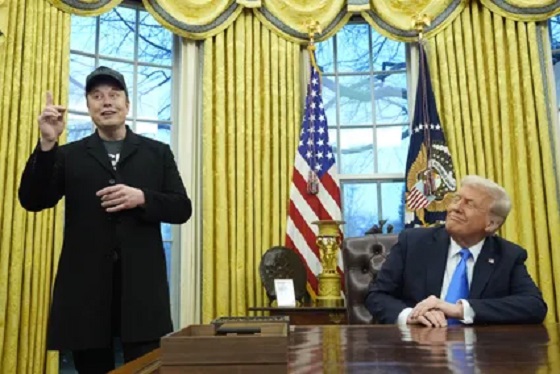Alberta
ECONOMIC RECONCILIATION IS A PRIORITY AT ENBRIDGE

ECONOMIC RECONCILIATION IS A PRIORITY AT ENBRIDGE

Building and maintaining relationships with Indigenous nations and groups over the lifecycle of our assets is essential to Enbridge’s continued success as a leading North American energy delivery company. An important part of how we do business is to work with Indigenous communities to help increase their capacity to participate economically in our projects and operations. Economic engagement ranges from providing training and employment opportunities that build transferrable skills, to the procurement of goods and services from Indigenous businesses. To tap into Indigenous communities’ growing capacity and desire to participate in contracting and employment opportunities, Enbridge has adopted a supply chain process that requires prospective contractors to include detailed Socio-Economic Plans that outline how they will include local Indigenous communities and businesses in their work for Enbridge’s projects and operations. This approach exemplifies our desire to build long-term relationships which create value for both Indigenous communities and our business.
Enbridge has long recognized that hiring Indigenous businesses supports local employment, gives us the opportunity to understand available services and talent, and helps build trust and relationships. We also appreciate the important contribution that Indigenous businesses make each year to the overall economy.
In 2019, we marked a major milestone, surpassing $1 billion in Indigenous spending since 2011 across our Liquids Pipelines and Gas Transmission businesses. This includes direct spend with Indigenous businesses as well as subcontracting opportunities for Indigenous businesses, suppliers and wages paid to Indigenous workers from our contractors.
Our Line 3 pipeline replacement project (L3RP) is an excellent example of how our supply chain is delivering on our commitment to maximize Indigenous participation. This supports our efforts to advance economic reconciliation in accordance with the Truth and Reconciliation Commission’s Call to Action #92.
At $5.3 billion for the Canadian segment alone, the L3RP was the largest capital project in Enbridge’s history. It also represented our largest and most successful community engagement effort – including more than 150 Indigenous communities from as far as 300 kilometres from the pipeline right of way.
As of late September 2019, Indigenous spending on the L3RP totaled approximately $440 million for contracting and wages, while more than 1,100 Indigenous men and women were employed on project construction, representing approximately 20% of the overall workforce.

Indigenous monitors provided environmental and cultural perspective to the project construction team.
“The economic benefits flowing to Indigenous communities from Line 3 pipeline construction are no accident or happy coincidence,” says Enbridge’s Dave Lawson, Vice President of Major Projects. “Rather, they are the direct result of our comprehensive and proactive engagement program and the joint commitments between Enbridge and numerous Indigenous communities and groups.”
The leaders of several First Nations located along the Line 3 route note that “this economic stimulus benefited more than just the workers, it benefited the families and the Nations we represent.” They worked with Enbridge and “found ways to ensure environmental protections, and ways to secure tangible economic benefits and career development commitments for the indigenous people we represent. Enbridge listened and we believe this project has been a success for our people.”
Another community benefitting from the L3RP was the Manitoba Metis Federation (MMF). David Chartrand, President of the MMF says, “In order to work on a pipeline you have to have certification, so we got our people all ready and trained a year before the pipeline went in. We were ahead of the game.”
“I can honestly say,” he adds, “that this is one of the true success stories that we can probably talk about. Enbridge has got a blueprint for other companies if they want to use it.”
This focus on engagement and inclusion led to 58 cooperative project agreements with Enbridge, representing the participation of 95 Indigenous communities or groups.
“From the outset, we made a concerted effort to ensure Indigenous communities understood our project, specifically how they might participate and benefit economically,” explains Kim Brenneis, Director of Community and Indigenous Engagement. “I think the positive results we’ve seen speak to Enbridge’s strong commitment to inclusion as well as to building mutually-beneficial relationships with Indigenous nations.”
Beyond successful engagement, there are three major reasons for the strong Indigenous project participation and spending profile, explains Barry Horon, Director of Supply Chain Management for Projects.
“First, we worked with Indigenous communities to help create the capacity needed to participate in meaningful pipeline contracting and employment opportunities; second, Enbridge adopted a proactive supply chain process that, among other initiatives, required prospective contractors to include detailed Indigenous participation plans in their bids; and third, we implemented a labour strategy to enhance connections between Indigenous job seekers and our primary construction contractors through an online portal and the use of Indigenous labour brokers,” says Horon.

Indigenous men and women, such as Kara Pooyak of Sweetgrass First Nation, made up 20% of the Line 3 construction workforce.
Included in the Indigenous workforce were 27 construction monitor and nine liaison positions that provided both Indigenous perspectives and advice to the Line 3 project team. This helped to ensure that Enbridge’s environmental mitigation strategies – which were approved by the National Energy Board – were implemented during construction.
Another key component of the labour strategy was the now-completed Line 3 Pipeline 101 training-to-employment program. Over three years, more than 260 Indigenous men and women graduated from the program, many of whom have secured work on the L3RP.

Justin McKinney of Swan Lake First Nation is building a career in pipelining, thanks to training and mentorship he received during the Line 3 project.
Our experience with the L3RP led to an assessment of how Enbridge’s Indigenous engagement practices had evolved over the past few years. An outcome of this process was the introduction, in 2019, of our Indigenous Lifecycle Engagement Framework, which now guides our approach to building and sustaining long-term relationships across our business going forward, including for enhancing Indigenous economic participation in our projects and operation.
The framework was shared with several Indigenous nations in Canada. We are now incorporating their feedback into our planning and we will continue to seek to seek their input to ensure that our approach remains in step with their interests and goals.
Thanks to Todayville for helping us bring our members’ stories of collaboration and innovation to the public.
Click to read a foreward from JP Gladu, Chief Development and Relations Officer, Steel River Group; Former President and CEO, Canadian Council for Aboriginal Business.

JP Gladu, Chief Development and Relations Officer, Steel River Group; Former President & CEO, Canadian Council for Aboriginal Business
Click to read comments about this series from Jacob Irving, President of the Energy Council of Canada.

Jacob Irving, President of Energy Council of Canada
The Canadian Energy Compendium is an annual initiative by the Energy Council of Canada to provide an opportunity for cross-sectoral collaboration and discussion on current topics in Canada’s energy sector. The 2020 Canadian Energy Compendium: Innovations in Energy Efficiency is due to be released November 2020.
Click below to read more stories from Energy Council of Canada’s Compendium series.
PETER SUTHERLAND SR GENERATING STATION POWERS NORTHEAST ONTARIO
Alberta
Alberta government’s plan will improve access to MRIs and CT scans

From the Fraser Institute
By Nadeem Esmail and Tegan Hill
The Smith government may soon allow Albertans to privately purchase diagnostic screening and testing services, prompting familiar cries from defenders of the status quo. But in reality, this change, which the government plans to propose in the legislature in the coming months, would simply give Albertans an option already available to patients in every other developed country with universal health care.
It’s important for Albertans and indeed all Canadians to understand the unique nature of our health-care system. In every one of the 30 other developed countries with universal health care, patients are free to seek care on their own terms with their own resources when the universal system is unwilling or unable to satisfy their needs. Whether to access care with shorter wait times and a more rapid return to full health, to access more personalized services or meet a personal health need, or to access new advances in medical technology. But not in Canada.
That prohibition has not served Albertans well. Despite being one of the highest-spending provinces in one of the most expensive universal health-care systems in the developed world, Albertans endure some of the longest wait times for health care and some of the worst availability of advanced diagnostic and medical technologies including MRI machines and CT scanners.
Introducing new medical technologies is a costly endeavour, which requires money and the actual equipment, but also the proficiency, knowledge and expertise to use it properly. By allowing Albertans to privately purchase diagnostic screening and testing services, the Smith government would encourage private providers to make these technologies available and develop the requisite knowledge.
Obviously, these new providers would improve access to these services for all Alberta patients—first for those willing to pay for them, and then for patients in the public system. In other words, adding providers to the health-care system expands the supply of these services, which will reduce wait times for everyone, not just those using private clinics. And relief can’t come soon enough. In Alberta, in 2024 the median wait time for a CT scan was 12 weeks and 24 weeks for an MRI.
Greater access and shorter wait times will also benefit Albertans concerned about their future health or preventative care. When these Albertans can quickly access a private provider, their appointments may lead to the early discovery of medical problems. Early detection can improve health outcomes and reduce the amount of public health-care resources these Albertans may ultimately use in the future. And that means more resources available for all other patients, to the benefit of all Albertans including those unable to access the private option.
Opponents of this approach argue that it’s a move towards two-tier health care, which will drain resources from the public system, or that this is “American-style” health care. But these arguments ignore that private alternatives benefit all patients in universal health-care systems in the rest of the developed world. For example, Switzerland, Germany, the Netherlands and Australia all have higher-performing universal systems that provide more timely care because of—not despite—the private options available to patients.
In reality, the Smith government’s plan to allow Albertans to privately purchase diagnostic screening and testing services is a small step in the right direction to reduce wait times and improve health-care access in the province. In fact, the proposal doesn’t go far enough—the government should allow Albertans to purchase physician appointments and surgeries privately, too. Hopefully the Smith government continues to reform the province’s health-care system, despite ill-informed objections, with all patients in mind.
Alberta
Canada’s heavy oil finds new fans as global demand rises

From the Canadian Energy Centre
By Will Gibson
“The refining industry wants heavy oil. We are actually in a shortage of heavy oil globally right now, and you can see that in the prices”
Once priced at a steep discount to its lighter, sweeter counterparts, Canadian oil has earned growing admiration—and market share—among new customers in Asia.
Canada’s oil exports are primarily “heavy” oil from the Alberta oil sands, compared to oil from more conventional “light” plays like the Permian Basin in the U.S.
One way to think of it is that heavy oil is thick and does not flow easily, while light oil is thin and flows freely, like fudge compared to apple juice.
“The refining industry wants heavy oil. We are actually in a shortage of heavy oil globally right now, and you can see that in the prices,” said Susan Bell, senior vice-president of downstream research with Rystad Energy.
A narrowing price gap
Alberta’s heavy oil producers generally receive a lower price than light oil producers, partly a result of different crude quality but mainly because of the cost of transportation, according to S&P Global.
The “differential” between Western Canadian Select (WCS) and West Texas Intermediate (WTI) blew out to nearly US$50 per barrel in 2018 because of pipeline bottlenecks, forcing Alberta to step in and cut production.
So far this year, the differential has narrowed to as little as US$10 per barrel, averaging around US$12, according to GLJ Petroleum Consultants.
“The differential between WCS and WTI is the narrowest I’ve seen in three decades working in the industry,” Bell said.
Trans Mountain Expansion opens the door to Asia

Oil tanker docked at the Westridge Marine Terminal in Burnaby, B.C. Photo courtesy Trans Mountain Corporation
The price boost is thanks to the Trans Mountain expansion, which opened a new gateway to Asia in May 2024 by nearly tripling the pipeline’s capacity.
This helps fill the supply void left by other major regions that export heavy oil – Venezuela and Mexico – where production is declining or unsteady.
Canadian oil exports outside the United States reached a record 525,000 barrels per day in July 2025, the latest month of data available from the Canada Energy Regulator.
China leads Asian buyers since the expansion went into service, along with Japan, Brunei and Singapore, Bloomberg reports. 
Asian refineries see opportunity in heavy oil
“What we are seeing now is a lot of refineries in the Asian market have been exposed long enough to WCS and now are comfortable with taking on regular shipments,” Bell said.
Kevin Birn, chief analyst for Canadian oil markets at S&P Global, said rising demand for heavier crude in Asia comes from refineries expanding capacity to process it and capture more value from lower-cost feedstocks.
“They’ve invested in capital improvements on the front end to convert heavier oils into more valuable refined products,” said Birn, who also heads S&P’s Center of Emissions Excellence.
Refiners in the U.S. Gulf Coast and Midwest made similar investments over the past 40 years to capitalize on supply from Latin America and the oil sands, he said.
While oil sands output has grown, supplies from Latin America have declined.
Mexico’s state oil company, Pemex, reports it produced roughly 1.6 million barrels per day in the second quarter of 2025, a steep drop from 2.3 million in 2015 and 2.6 million in 2010.
Meanwhile, Venezuela’s oil production, which was nearly 2.9 million barrels per day in 2010, was just 965,000 barrels per day this September, according to OPEC.
The case for more Canadian pipelines

Worker at an oil sands SAGD processing facility in northern Alberta. Photo courtesy Strathcona Resources
“The growth in heavy demand, and decline of other sources of heavy supply has contributed to a tighter market for heavy oil and narrower spreads,” Birn said.
Even the International Energy Agency, known for its bearish projections of future oil demand, sees rising global use of extra-heavy oil through 2050.
The chief impediments to Canada building new pipelines to meet the demand are political rather than market-based, said both Bell and Birn.
“There is absolutely a business case for a second pipeline to tidewater,” Bell said.
“The challenge is other hurdles limiting the growth in the industry, including legislation such as the tanker ban or the oil and gas emissions cap.”
A strategic choice for Canada
Because Alberta’s oil sands will continue a steady, reliable and low-cost supply of heavy oil into the future, Birn said policymakers and Canadians have options.
“Canada needs to ask itself whether to continue to expand pipeline capacity south to the United States or to access global markets itself, which would bring more competition for its products.”
-

 Censorship Industrial Complex2 days ago
Censorship Industrial Complex2 days agoHow the UK and Canada Are Leading the West’s Descent into Digital Authoritarianism
-
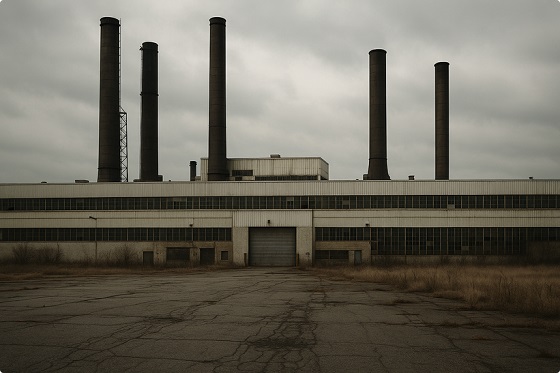
 Business2 days ago
Business2 days agoCapital Flight Signals No Confidence In Carney’s Agenda
-
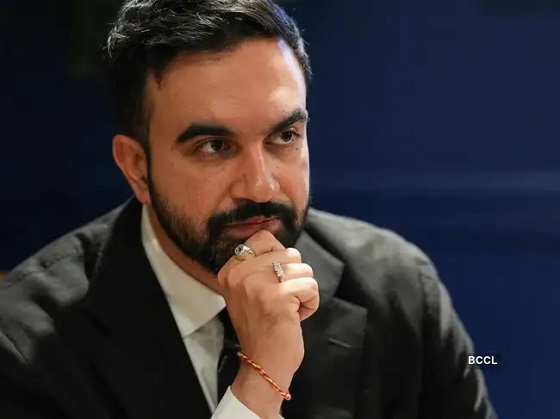
 International2 days ago
International2 days agoThe capital of capitalism elects a socialist mayor
-
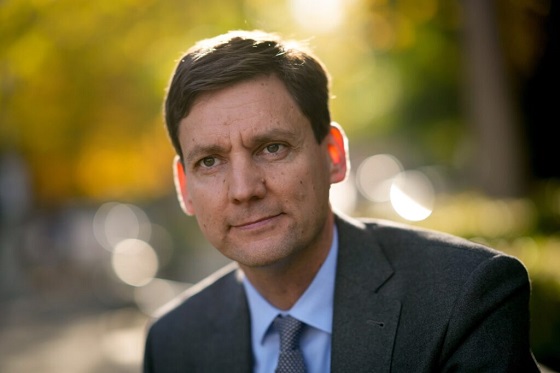
 Energy1 day ago
Energy1 day agoEby should put up, shut up, or pay up
-

 Business2 days ago
Business2 days agoPulling back the curtain on the Carney government’s first budget
-
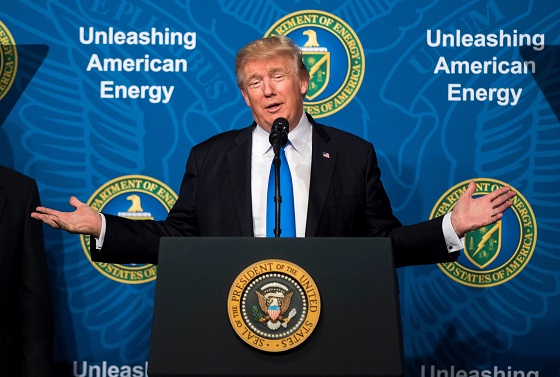
 Daily Caller1 day ago
Daily Caller1 day agoUS Eating Canada’s Lunch While Liberals Stall – Trump Admin Announces Record-Shattering Energy Report
-
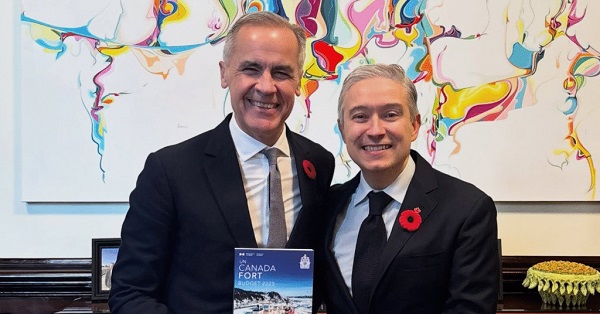
 Business1 day ago
Business1 day agoThe Liberal budget is a massive FAILURE: Former Liberal Cabinet Member Dan McTeague
-

 Business1 day ago
Business1 day agoCarney’s budget spares tax status of Canadian churches, pro-life groups after backlash






